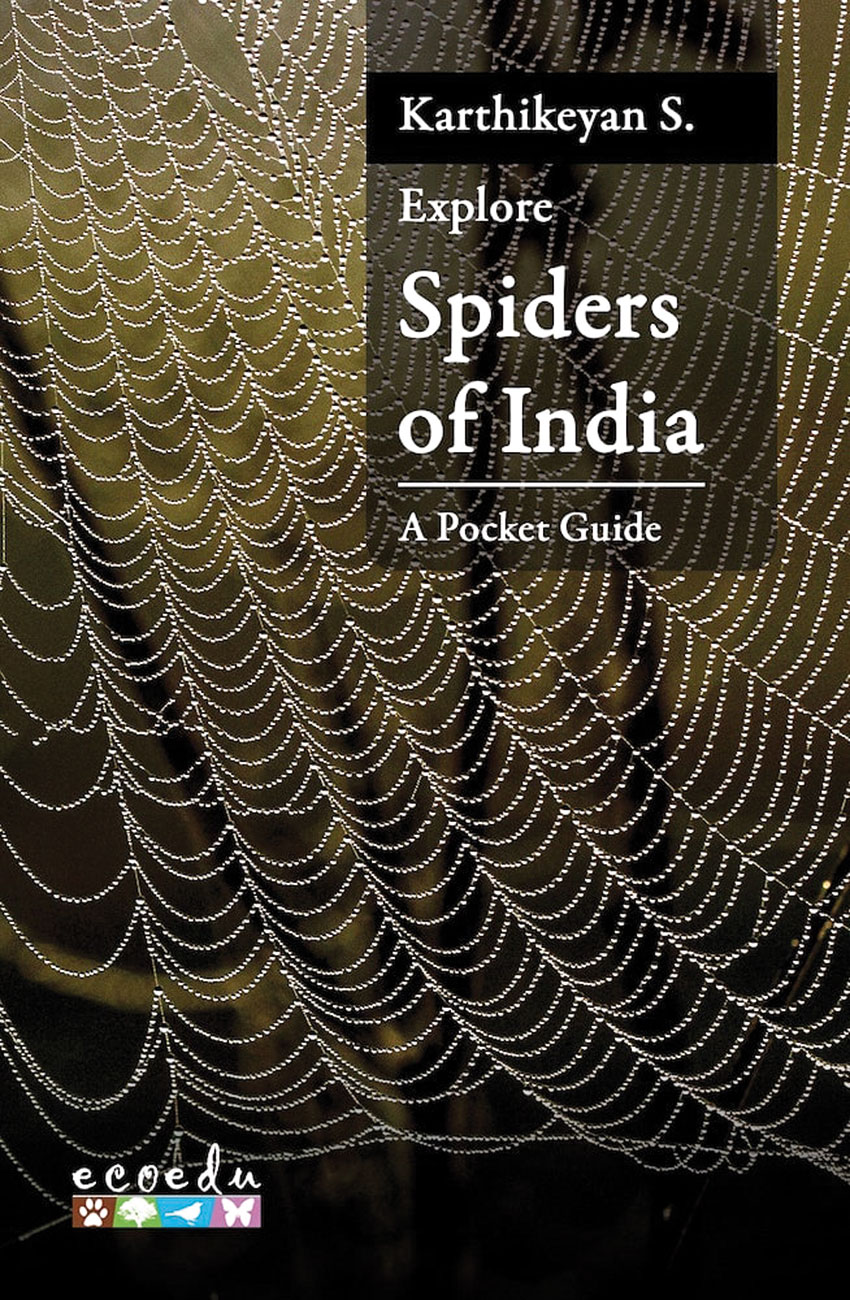Book Review: Explore Spiders Of India: A Pocket Guide
First published in Sanctuary Asia,
Vol. 43
No. 4,
April 2023
With improved technology and a much greater appetite among the young for books to remind them of the wonderful biosphere in which they live, it is heartening to see how many new, high-quality publications are emerging from within India. Here are three books that Sanctuary believes should be in every public library and in the homes of all those whose hearts beat to nature’s drum.
Explore Spiders of India: a pocket guide
By Karthikeyan S.
Published by EcoEdu Consultants Pvt. Ltd.
Paperback, 200 pages, Rs. 450/-

“If you want to live and thrive let the spider run alive” – a Spanish proverb.
First, a disclosure: I have been fascinated by spiders, those fascinating eight-legged hunters, since I was a child. I would spend countless moments watching them spin webs, hunt and otherwise go about their busy lives, at home, in city gardens, even in school classrooms, and offices! And of course, also in deep forests, during birdwatching trips, walking trails, waiting in hides, and on treks in the Western Ghats and the Himalaya.
This tiny pocket book is a fantastic edition on the natural history of India. The author is an accomplished naturalist, photographer who currently heads Karnataka’s famous tourism venture, Jungle Lodges.
Anyone interested in identifying spiders or wanting to know a touch more about the natural history of these arachnids absolutely must keep a copy handy. I found the tiny book easy to read, easy to understand and useful when it came to exploring the behavioural characteristics, identities and strategies of spiders. I also enjoyed reading about how they differed from their relatives... scorpions, harvestmen, ticks, mites and more!
Written in a chatty style, the author touches on arachnophobia (the fear of spiders). “Spiders are venomous but often the venom is potent only to their natural prey. So far, no Indian spider species has been found to be venomous to humans. If you happen to handle a particularly hairy spider, however, it might give you a bit of a nip if it feels threatened,” he writes.
Well written and edited, this fascinating book is usefully dotted with colour images. The guide covers 20 spider families and more than 100 genera. I would recommend acquiring a copy, even to keep as a quick reference at home!
Reviewed by Bittu Sahgal


